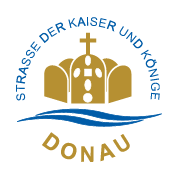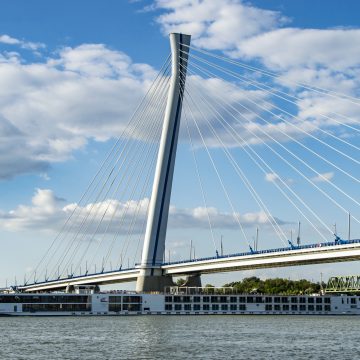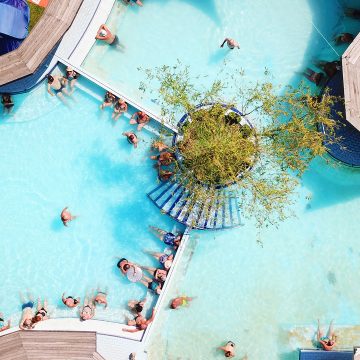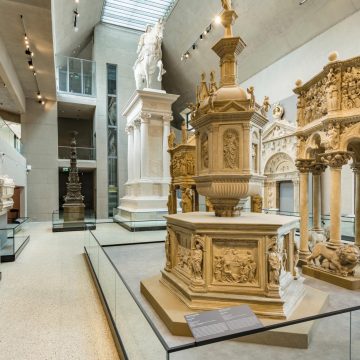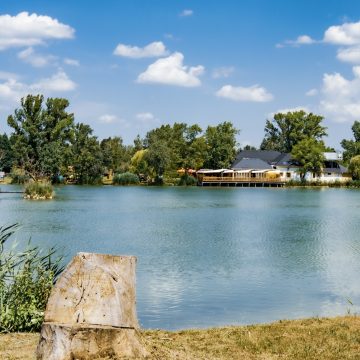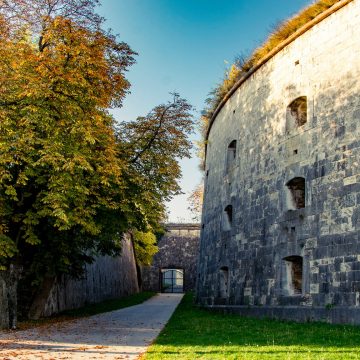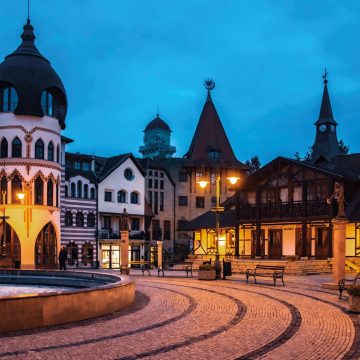Komárom / Komárno
Komárom (Hungary) / Komárno (Slovakia)
Komárom and Komárno have a common history on the two banks of the Danube. After the First World War, in accordance with the Trianon Peace Treaty, the city, which previously functioned as an administrative unit, was divided into two parts. Today, its southern part belongs to Hungary, and its northern part to Slovakia. The city area has been inhabited since the Stone Age. Celts and Romans also lived here, who built fortresses and military camps along the river line. Brigetio, built on the right bank of the Danube, was the legionary camp of the then Limes. The civic town next to it was a flourishing settlement in the province of Pannonia. The excavations lasted more than 30 years and brought to light a civil and military city with a 1700 year old bathing culture. The archaeological findings are exhibited in the Brigeto Visitor Center. The bathing culture is still alive today. Brigeto Spa is open all year round!
The Hungarian King Béla IV raised Komárom to the rank of a town, and gave its inhabitants the same rights as the citizens of Buda. In the 16th century the castle of Komárom was besieged twice by the Turks, but could not be occupied. The enormous development of the town began in the early 18th century. In the 19th century it became an important trade and shipping center. It played an important role in the Napoleonic Wars and became a symbolic place of the Revolution and the War of Independence of 1848/49. Many famous personalities were born here, among them the Hungarian King László V and the composer Franz Lehár, the operetta king of Komárno. It was here that Empress and Queen Elisabeth Amalie Eugenie Wittelsbach, or as the world knows, Sisi, one of the most beloved female figures of the Habsburg dynasty entered Hungarian land for the first time in 1857. Her name and memories of her can still be found in several places in Komárom, such as the Elisabeth Bridge, which connects the two countries.
The fortress complex of Komárom is the largest modern fortress in Central Europe. The Monostor Fortress houses an exhibition of military history, while the Csillag Fortress houses a thematic exhibition of more than 300 sculptures. Replicas of the most famous sculptures in Europe, from Greek and Roman masters to the Renaissance, were selected. Works of art of historical importance such as the Venus de Milo and the 7-meter-high Colleoni equestrian statue can be seen here.
In the series of sights the fortress system of Komárno with its elements in both countries is in the first place. Other sights of Komárno are the Danube Museum, the European Courtyard, the Jókai Theater and the Klapka Square, while in Komárom the Klapka György Museum, the Brigetio Thermal Bath, the WF Amusement Park and the Hungarian Equestrian Theater.
Komárom is located halfway between Vienna and Budapest and is easily accessible by the hourly IC train between the two capitals and by car via the M1 freeway.
H-2900 Komárom, Igmándi út 2.
Tel: +36 34 540 590, +36 34 540 591
komarom@tourinform.hu
Námestie gen. Klapku 1., SK-945 01 Komárno
Tel: +421 948 830 202
info@podunajsko.com
